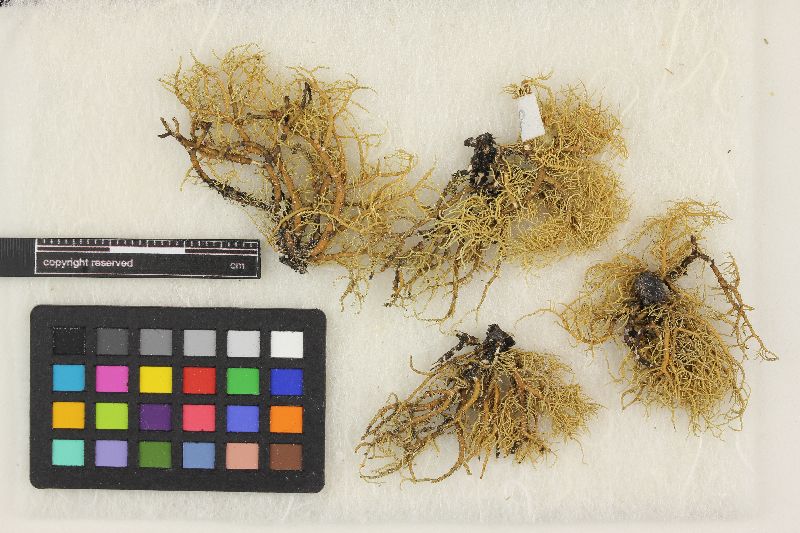
Consortium of Lichen Herbaria
- building a Global Consortium of Bryophytes and Lichens as keystones of cryptobiotic communities -
- Home
- Search
- Images
- Species Checklists
- US States: O-Z >
- US National Parks
- Central America
- South America
- US National Parks
- Southern Subpolar Region
|
|
|
|
Family: Parmeliaceae
|
Nash, T.H., Ryan, B.D., Gries, C., Bungartz, F., (eds.) 2007. Lichen Flora of the Greater Sonoran Desert Region. Vol 3. Thallus: shrubby, 1.5 to 3 cm long branching: anisotomic dichotomous, branches divergent basal part: short, not conspicuous, black pigmented branches: usually tapering, sometimes ±irregular, with inconspicuous segmentation (3-5 segments/0.5 cm), lateral branches not narrowed at point of attachment segments: terete to slightly ridged, cylindrical to slightly sausage-like; foveoles: absent; transversal furrows: present papillae: verrucous, irregularly distributed on main branches tubercles and fibercles: absent fibrils: short spinulous, 1-2(-3) mm long, irregularly distributed on the whole thallus soralia: superficial to slightly stipitated, as large as the branches when mature, sometimes ±encircling the end of the branches, circular to oblong transversally, without margin, usually not confluent, arising initially on the cortex isidiomorphs: small, and sometimes black-tipped, mainly on young soralia, usually few on mature soralia cortex: ±smooth, and glossy, thin (5-8%) medulla: loose to dense, extruding between the segments, especially at ramification points, moderately large axis: moderately thick Apothecia: rare Spot tests: K+ yellow turning red, C-, KC-, P+ orangish yellow Secondary metabolite: salazinic acid. Substrate and ecology: growing on rock, at 1950-2800 m World and Sonoran distribution: endemic to Mexico where it is reported from Chihuahua. Notes: The lateral branches which are not narrowed at ramification point make Usnea ammannii distinct from all species of the U. fragilescens agg. Characteristic are the large, and ± circular soralia with few isidiomorphs when mature. Usnea substerilis Motyka has the same kind of soralia but has, however, a different ecology, a dull cortex, and normally no isidiomorphs in mature soralia. Usnea lapponica, and U. fulvoreagens have large soralia as well but they are deeply excavate, reach the central axis, and never produce isidiomorphs. |
Powered by Symbiota










